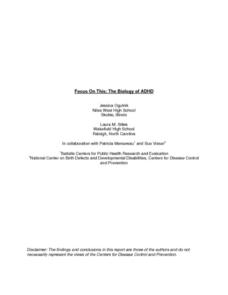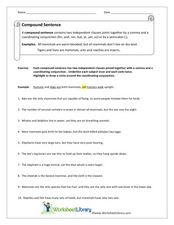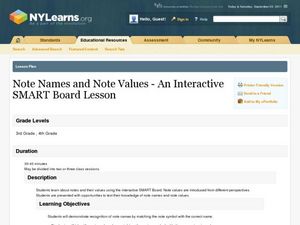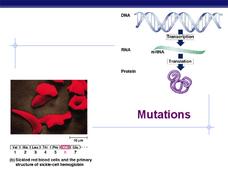Curated OER
Anthropods and Echinoderms
Students examine the attributes of crickets. In this arthropods instructional activity, students observe crickets and sketch and label their parts. Students respond to questions regarding their observations.
Curated OER
Skeletal Flash Cards
For this skeletal system worksheet, students are given 19 diagrams of different bones or parts of the skeletal system. They label all the structures of each bone or set of bones such as the skull and use the flashcards to study the parts.
Curated OER
The Heart
Students identify the parts of the heart and the path blood flows through it. They practice using new vocabulary and labeling the parts of the heart. They examine the path of oxygenated and deoxygenated blood as well.
Curated OER
Creating a Map of France
In this crating a map of France activity, students find and label important parts of France, bodies of water, mountains and surrounding countries.
Curated OER
Mussel Anatomy Lesson Plan
Students identify the parts and functions of a mussel. They explain how its physical adaptations help it survive in its habitat. They label the parts as a quiz to complete the lesson.
Curated OER
The Biology of ADHD
Students investigate the biology of ADHD and its implications upon the formation and treatment of the disease. They draw and label the parts of a neuron. Also, they describe the neurotransmission cycle. Students create a list of pros and...
Curated OER
Fish In a Bottle
Students work together to build their own fish ecosystems. As a class, they share their prior knowledge about catfish and use a diagram to label its body parts. They record their observations of the ecosystem and determine what they...
Curated OER
Northern Leopard Frog
In this frog anatomy instructional activity, students use the 7 body part names to correctly label a diagram of the Northern Leopard Frog. Students read the information paragraph about the frog.
Curated OER
Compound Sentence
In this sentence structure worksheet, students review a definition and examples of compound sentences prior to responding to 10 questions that require them to label the parts of compound sentences.
Perkins School for the Blind
Left Versus Right
When you can't see, it is extremely important to be able to reorient yourself. Learners with visual impairments work though an activity to build spacial awareness based on moving left and right. A marker (bracelet, bell, or weight) is...
Curated OER
Energy Plus!
"Energy Plus!" from Together Counts is three days worth of lessons, discussions, and activities about nutrition. The materials help you teach youngsters about eating healthy and burning calories. Energy in and energy out. Included are...
Curated OER
Circulatory System
The ciculatory system is introduced here by means of clear, labelled diagrams and charts with details. After learning the basics of the heart strucure, a sequence of slides help show the flow the blood as the heart muscle contracts. A...
Curated OER
What is Physical Fitness?
First graders explore and discuss what physical fitness actually is, its benefits and how to obtain it through a variety of ways. They summarize the five parts of physical fitness: cardiovascular endurance,muscular strength, muscular...
Grand Erie District School Board
Model Cell Project
If you're finishing up a unit on cells, here's a great project to get kids collaborating and recalling what they've learned in a fun and tangible way. Small groups create plant or animal cells out of materials they have at home. They use...
Curated OER
Wellness and the Benefits of Exercise
Second graders discuss benefits of keeping physically fit, predict effects of exercise on their bodies, perform various exercises correctly, including push-up, curl-up, and jumping jack, discuss and follow safety practices while...
Curated OER
Echinoderms
Echinoderm structure and characteristics are the focus of this reading comprehension and labeling worksheet. Attractive diagrams and ample information make this a suitable homework assignment for your biology buffs when learning...
Discovery Education
Solar System Scale
Extremely large or extremely small numbers are difficult to comprehend. To help understand the massive scale of the solar system, learners complete two activities. First, they create a model to compares the size of the bodies in the...
Ask a Biologist
Human Skeleton Anatomy Activity
Young biologists piece together the puzzle of the human body with this simple anatomy worksheet. Presented with a picture of the human skeleton, students are challenged with the task of correctly identifying the 27...
Curated OER
Note Names and Note Values - An Interactive Smart Board Lesson
Using the Note Names and Values SMART notebook file, review the whole, half, quarter and eighth note with learners. Students sing "Apple Tree Song." They add body percussion, and then instruments. Learners use the SMART apple tree, they...
Curated OER
Congruent Polygons: Copying Stretchy Shapes
Third graders investigate congruent polygons through dance. In this congruency lesson, 3rd graders do the "brain dance" as a warm up. They review polygon names by singing "The Polygon Chant," before mirroring congruent shapes with a...
Curated OER
Hazards: Second Grade Lesson Plans and Activities
Equip learners with safety knowledge in the case of an earthquake. After coloring the places to go to get help after a quake, and label places that wouldn't be safe to go after a quake, young geologists simulate three levels of...
Curated OER
Introduction to Nutrition
Fourth graders take a closer look at the foods they eat and the nutritional value of each. This instructional activity helps them see why foods are grouped together the way they are and what types of nutrition are provided by these food...
Curated OER
Keeping Your Heart in Good Shape: What are the Benefits? - Biology Teaching Thesis
Students name the main parts of the heart and what events occur there. They write a reaction that contains complete sentences, and uses proper spelling and grammar, after viewing a video. Students define the following terms: contraction,...
Curated OER
Mutations
The basics of mutation types and some potential effects of those are described and diagrammed here. Each detail is very clear and includes the labels and translation change exhibited. A great slideshow to expand on DNA replication issues.























